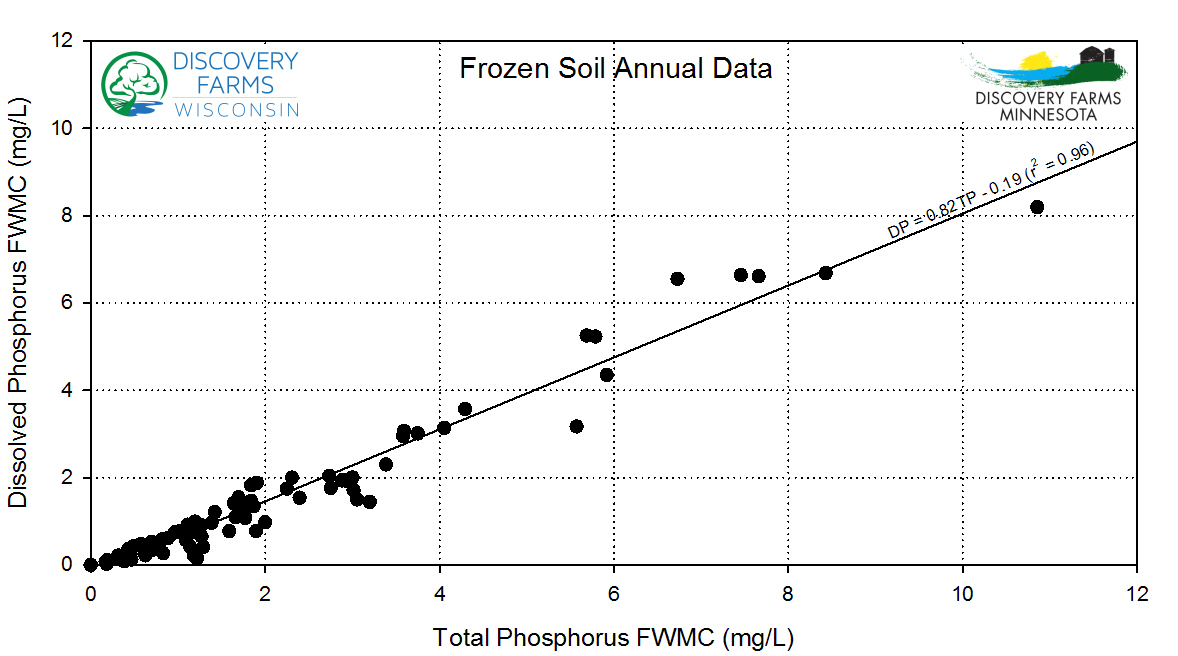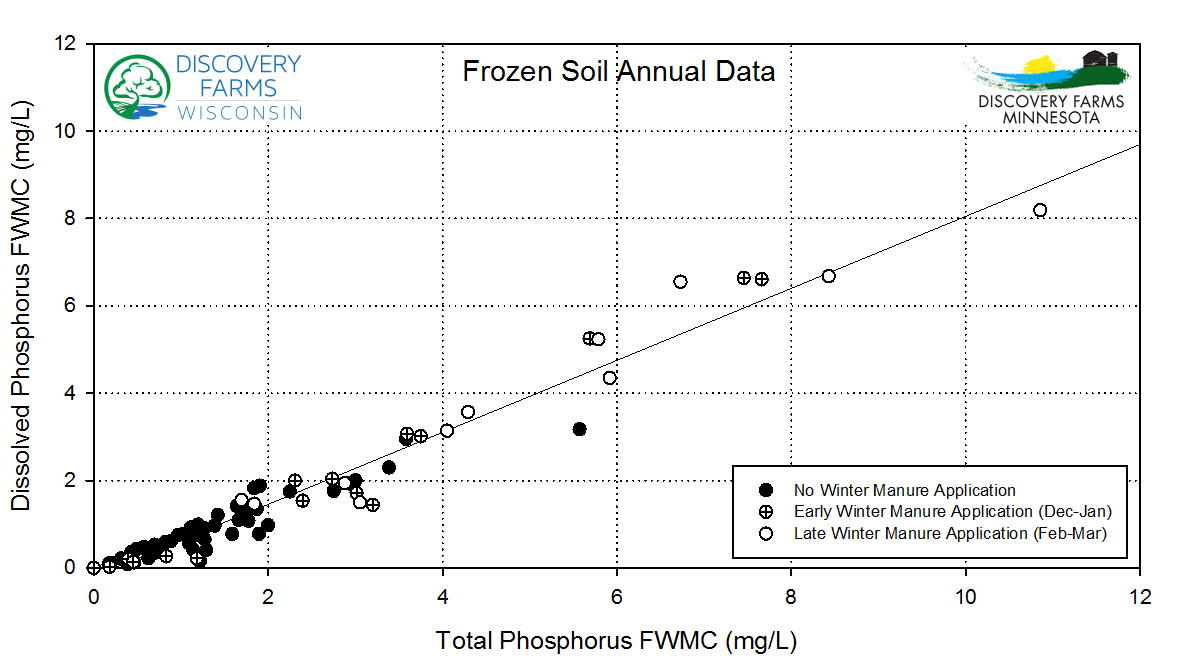February and March are usually the times of year when Discovery Farms starts to distribute warnings about spreading manure during the transition from winter to spring. Although the risk is lower this year due to a limited snowpack and frost, conditions can always change to increase those risks. For example, an unwelcome snowstorm brought a fresh blanket of snow to Southeastern Minnesota and Western Wisconsin last night. During this time of year, it is always important to monitor weather forecasts and field conditions to assess risk with manure application.
Research conducted by Discovery Farms has documented the risks of winter manure application. With 110 sites years of edge-of-field surface runoff data collected from 28 monitoring sites on 21 farms throughout Minnesota and Wisconsin there is considerable knowledge on the impacts of winter manure application. February and March are important time periods for surface runoff; on average, 46% of the annual runoff occurs on frozen soils during these two months. Figure 1 plots the dissolved phosphorus and total phosphorus concentrations of this runoff. During frozen soil conditions, greater than 80% of the total phosphorus is in the dissolved form. Dissolved phosphorus is not attached to soil particles and originates from decaying plants and residues, fertilizer and manure placed on the soil surface, and high soil test phosphorus soils.

Winter manure application has an impact on the level of phosphorus in frozen soil surface runoff. Figure 2 includes the same data as above, but it also categorizes the data into sites that had late winter manure application (February-March), early winter manure application (December-January), and no winter manure application. Most of the sites that had total phosphorus concentration greater than 4 mg/L and dissolved phosphorus concentration greater than 3 mg/L had some form of winter manure application, in particular, late winter manure application.

This data collected by Discovery Farms illustrates the risks associated with winter manure application. Phosphorus concentrations are not always increased with winter manure application. However, when the right conditions are present for high frozen ground runoff, winter manure application can significantly increase phosphorus losses. Monitoring field conditions and weather forecasts can identify conditions when runoff is likely. Avoiding manure application during these times is key to reducing phosphorus losses. If manure needs to be removed from barns and lots, consider if stacking and spreading later is an option. If spreading manure to fields is necessary during these high risk times, try selecting fields that are flat, north facing, and an appropriate distance from waterbodies.
- Lessons Learned from Schafer Farms – Implementing Conservation in a Rolling Landscape - April 8, 2020
- What happened to spring? - July 15, 2019
- Tile flow and nutrient movement in Northwest Minnesota - September 13, 2018
